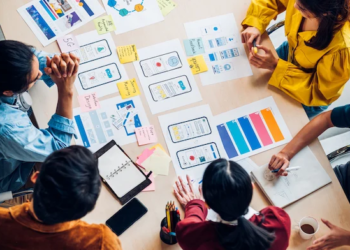What is internal linking?
A page on the same website can be reached using an internal linking. Technically speaking, that indicates that the source domain and target domain of an internal link are identical.
Why is internal linking important?
From a UX perspective, internal linking is important because of it…
- assists visitors in using the website and locating relevant material
- prevents people from leaving the website after viewing the first page and keeps them surfing instead
- sends consumers to the following phase of the buying process
From an SEO perspective, internal linking is important because it…
defines the information hierarchy and website architecture
A website’s most authoritative pages will often be linked to the most.
equitably distributes the website’s page authority and ranking power
Link authority is transferred from the source to the target URL via internal links. Internal links from a source URL that has strong SEO authority will transfer a portion of that authority to the destination URL.
increases your ranking for target keywords
An internal link’s anchor text informs search engines that the destination URL is topically relevant to people who are looking for that anchor text.
aids in differentiating two pages with identical topics
For instance, search engines could struggle to distinguish between a market and a neighbourhood in terms of subject. An internal link with optimised anchor text can, however, assist search engines in recognising this distinction and assigning the sites the appropriate ranking.
The combination of all of these factors improves the website’s overall SEO performance by making it more user- and crawler-friendly.
Best practices for internal linking
Optimize anchor text for your primary keyword target
Use that term (or a tiny variant of it) as the anchor text to target the main keyword that you want the destination URL to rank for.
Link deep in your website hierarchy
Links to your top-level pages should generally be avoided because they are already the targets of site-wide internal links (usually found in the main menu or footer). It’s great practise to connect to pages deep inside your website architecture for successful internal linking.
Internal links should read naturally and not be overly optimized
Avoid stuffing your anchor text with keywords, and wherever you can, vary it. It might be useful to include variants of your main keyword goal.
Link to the most relevant piece of content
Link to the page if the material there has a topic that is similar to the context of the source.
Use rel=follow links
Follow links ensure that SEO authority flows freely amongst the pages of your website.
Use a reasonable number of internal links per page
Use your best judgement when deciding how many internal links to include on each page as there is no standard amount. An ideal number of internal links for a long-form piece of material is three to four.
Use static HTML absolute URLs
When trying to employ internal linking for SEO, links in unparseable Javascript, Flash, Java, or other plugins are often unavailable by crawlers. Use static a href > links instead. Because they guarantee that search engines convey link authority to the proper URL in the intended URL format, absolute URLs are therefore more beneficial than relative URLs (for example, www.example.com/page instead of /page).
Common internal linking issues/opportunities
Orphaned pages
Internal links are essential for directing visitors and web spiders to other pages on your website. A page cannot be indexed or ranked if it cannot be found by crawlers and is not linked to from any other pages on your website. As a result, it is an orphaned page, meaning that only people who are aware of its precise URL may locate it. Orphaned pages don’t exist in the eyes of Google.
Broken internal links
In addition to keeping 404 pages in the index, internal links that refer to defunct pages also convey SEO authority to them.
Internal links that redirect
Studies have revealed that a little amount of SEO authority is lost when a URL reroutes from Page A to Page B. Redirects also need more work from servers, which might slow down pages. A target URL should be the last destination URL that resolves to a 200 status code in order to maximise the value of an internal link.
Links pointing to pages blocked from search engines
Avoid creating internal links that refer to URLs you don’t want crawled since they aid crawlers in indexing the pages on your website.











